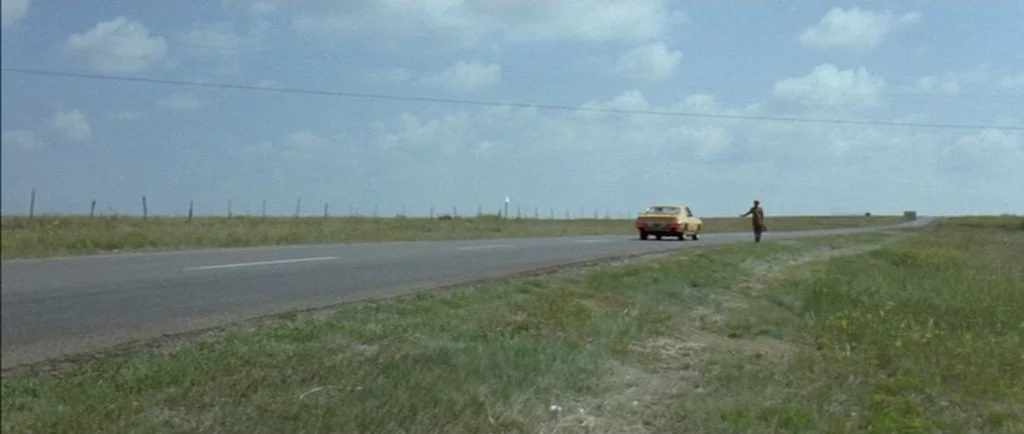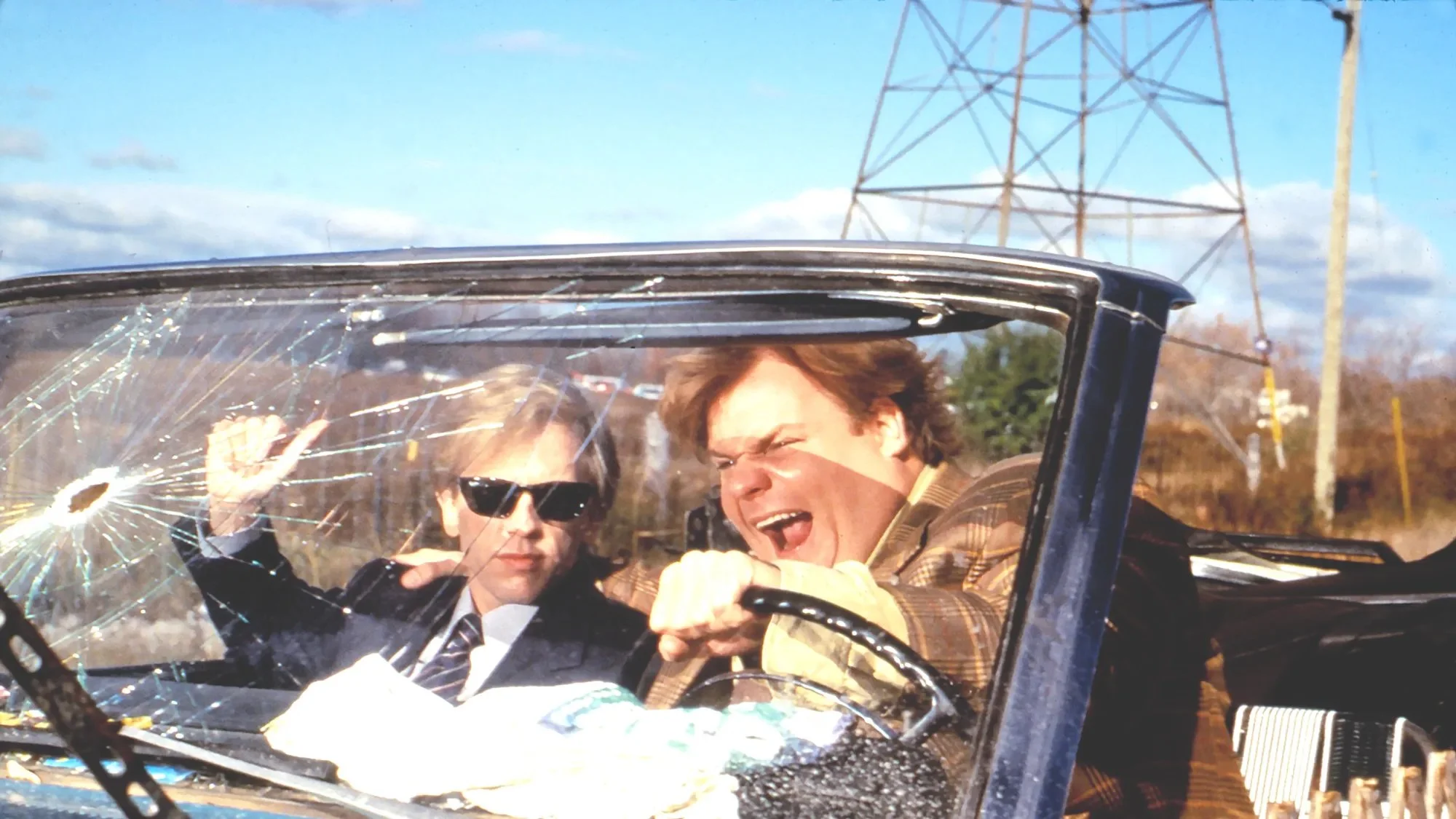The Way of the Road: Road Trip Movies Across Generations and Genres
Road trips, like jazz and The Simpsons, are a truly American invention. Started by Henry Ford and Thomas Edison to, partially, get people interested in cars (read Jeff Guin’s The Vagabonds for some fun history!), long driving journeys speak to aspects of early American culture that are ever prevalent: manifest destiny and rugged individualism. On a road trip, there’s no set schedule, and no adherence to the rules. Forget tour groups or airlines, in a car you’re free to move in any direction, coast to coast, border to border. It’s all about doing things our own way and sometimes rolling with the punches.
Enter road movies. Another arguably American invention. Put people in a car, set them out on a journey, watch chaos ensue. Or romance. Or horror, or comedy, or whatever. Road movies have never been exclusive when it comes to genre. It Happened One Night (1934) is often considered the first road movie and is a mad-cap, screwball comedy. But in a few decades, road movies would gain traction as horror and perfect vehicles (pun intended) for existential dread and the dirty interior of the human condition. There is never a shortage of road movies, because they translate well through changes in attitudes, cultural climates, and styles.
Plus, we’re all suckers for the romanticized idea of ‘the open road’. Don’t deny it.
The late sixties and seventies had a real bumper crop of road movies, but for my money, none are as unsatisfying and intriguing as Two-Lane Blacktop (1971). Directed by Hellman Monte and starring James Taylor and Dennis Wilson (yes, you’re thinking of the right people), Two-Lane Blacktop is the quintessential cult movie, seventies movie, and road movie in one dusty, shot-on-location package. This is a film of wooden performances and stilted dialogue that also manages to capture a period’s nihilistic alienation and gives a profound texture to the world it’s in through diegetic music and natural light. It’s a piece of work that trips over the line between unsentimental and surreal, using theatrical elements as not giving characters real names and burning the final frame of the film while also presenting a stripped down, unimpressive version of reality.
James Taylor plays The Driver, Dennis Wilson is The Mechanic. There’s Warren Oates’s character, named for his car GTO, and beautiful, doomed Laurie Bird as The Girl. The Driver and GTO are racing across the United States for pink slips, and that is the extent of the plot. What’s interesting about Two-Lane Blacktop is in the characters’ interactions; how little they change and how detached they are from any sense of self. GTO fashions his personality based on whomever he’s speaking to, changing his backstory and details of his life on a whim. The Driver is so focused on what he wants that he pushes away The Girl, who moves from man to man without taking stock of herself. Nobody in the film seems to be enjoying what they’re doing, but there’s a sense of not really knowing anything better. They have more freedom than they can handle; they’re tetherless in the world up until the burnt-frame final shot.
Anyone who is interested in Two-Lane Blacktop should read Bumpy Road: The making, flop, and revival of Two-Lane Blacktop by Sylvia Townsend. That is all.
Even during the gas price spike following 9/11, road movies kept coming, because if we didn’t keep driving and using as much oil as possible, the terrorists would win. So we got the 2001 thriller Joy Ride, starring Paul Walker, Leelee Sobieski, and the incomparable Steve Zahn.
Two brothers, Lewis (Walker) and Fuller (Zahn), are travelling from California to Colorado to pick up Lewis’s friend and hopeful love interest Venna (Sobieski). Along the way, Fuller installs a CB radio in Lewis’s car, and the pair begin screwing around, convincing a trucker named Rusty Nail that a woman named Candy Cane is into him and waiting at the same motel they’re staying in. They direct Rusty to the room of a man who was rude to them earlier and listen for the arrival. There's an argument and what sounds like a fight, but the brothers don’t think too much of it until the next morning when they hear that the man in the room was left for dead on the side of the highway.
As the brothers try to contact the police, Rusty appears and crashes their car into a tree. He tells them this is his answer to their joke, but appears to be done with them and leaves. Lewis and Fuller finally get to Venna, though all three soon find out that Rusty has been following them and is setting up a plan to kidnap Venna. He traps her, injures Fuller, and makes it look as if he himself has been killed in an accident. At the very end of the movie, Rusty’s voice is heard over the CB radio in an ambulance as he disappears back on the road again.
Joy Ride and Two-Lane Blacktop are very different in story and plot, but share a similar look. They take place in dry, barren landscapes where it’s plausible only the unsavory survive there. Joy Ride’s characters have more emotional connection to each other than anyone in Two-Lane Blacktop, but there’s also a sense that they’re adrift, or, in the case of Venna, at the mercy of other’s moods. We meet Fuller when he’s being bailed out of jail, and Lewis seems all too eager to drive across more than two huge states to pick up someone who might not return any of his romantic feelings. There’s a flippancy to their actions, which is also due to their ages, and they don’t understand the danger behind the faceless voice responding to them. Theirs is childish hijinks; Rusty’s is sheer retaliation.
Joy Ride has a more cinematic than sun-baked feel; with velvety lighting of vistas framed in mountain ranges, dramatic nighttime photography, and an overall appreciation for the harsh, stark beauty of the American west. Despite being a thriller aimed at a young audience, this is a movie crafted with a detailed eye and an aim to show how small the humans and vehicles are within the space. The scenes on the road roll fluidly while the interior shots are cramped, claustrophobic. We switch from the promise and potential of the journey to the anxiety of being trapped once the third act kicks into gear.
Okay, so maybe you’re not in the mood for detached, existential musings and aren’t really feeling an early aughts horror flick. What says you, in that case, to the 90’s classic Tommy Boy?
If you are someone who hasn’t seen Tommy Boy (1995), you’ve probably still seen clips of it and heard references like ‘fat guy in a little coat’. The broad scope of this movie is Tommy (Chris Farley) and Richard (David Spade) are on a cross-country sales mission in order to keep in business the company Tommy’s recently deceased father built. There’s all the great elements of a road comedy and a farce in this one, like the ticking clock deadline, people faking their identities, the mismatched duo, and jokes about eating lead paint.
Unlike the previous two movies, Tommy Boy takes place in lush, green areas and the danger comes from idiocy rather than rage and aimlessness. Tommy and Richard go through all the stages of hating each other to working together even as Richard’s beautiful car gets slowly destroyed over the course of the journey. While they have a goal and a deadline they need to meet, they also find a connection and a way to work together. Being forced into a situation where they both want the same thing provides them with a moment to understand each other’s thought process and, dare I say, work style. A running theme through Tommy Boy is the importance of family and siblings, and by the end of it, Tommy and Richard forge that type of relationship. It’s a wholesome choice for the road movie crowd, and one that remains surprisingly undated.
This is not even scratching the surface of what is out there. For anyone wanting to do a deep dive into road movies, get ready to never see the bottom no matter how deep you go. American productions are more common, but there’s plenty out of the UK and Australia like Sightseers (2012) and Priscilla Queen of the Desert (1994), respectively. There’s options for freaky, funny, funny-freaky, sentimental, grotesque, and beyond. While they vary in many ways, they also echo and mirror each other, so they’re a lot like the trips they’re based on: always different and yet somehow familiar.





